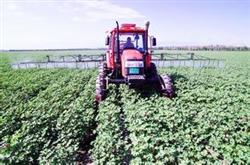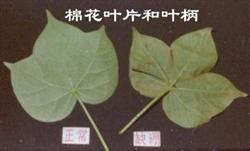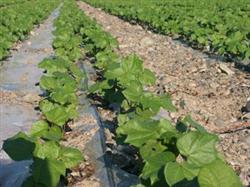Whole process Chemical Control Technology of Cotton

Cotton has unlimited growth habits, and vegetative growth and reproductive growth overlap at the same time. If fertilizer and water are not properly managed or climatic conditions change, cotton plants are very prone to overgrowth or greedy green late maturity, which is very disadvantageous to the realization of high and stable cotton yield. This problem is generally solved by chemical regulation. At present, the application of important techniques of plant cultivation to chemical control of cotton has become one of the important techniques of cotton high-yield cultivation, and the application of growth regulators has changed from passive and a small number of symptomatic application to active, multi-dose induction and chemical control, and we should mainly grasp the following periods in production. The main results are as follows: 1. Soaking cotton seeds during sowing period can be used (100,200) × 10 ~ (- 6) × 10 ~ (- 6) (that is, 1 gram of raw powder plus 10 kg or 5 kg of water). Non-tufted cotton seeds can be soaked in (200 ~ 300) × 10 ~ (- 6) × 10 ~ (- 6) solution, generally soaking for 5 hours for 8 hours, and then sowing. If machine sowing is needed, the seeds should be micro-dried after being fished out, and then sowed after a little dry. The cotton seedlings treated by soaking seeds generally grow steadily and have well-developed roots. 2. After spraying cotton bud at bud stage, 0.5g Anyuan powder is used every 667m 2, and spray water 10kg 15kg, which can promote root and seedling strength and coordinate the supply of water and fertilizer. 3. After foliar spraying in cotton field at early flowering stage, spraying 1g / 667m 2 of ammonium powder and spraying 15kg / 20kg of water can shape plant type, optimize canopy structure, postpone sealing, promote early boll and cotton boll development, and simplify mid-term pruning. 4. After spraying bolls on the middle and lower parts of cotton plants at full flowering stage (usually at the end of July), 2g of ammonium powder was used every 667m 2, and 20kg of water was sprayed. Spray at this time, can promote more early autumn peach, increase the boll weight, but also can prevent greedy green late ripening.
- Prev

Application of microbial Fertilizer to Cotton can prevent Disease
The symptoms of boron deficiency can appear after the emergence of boron-deficient cotton seedlings, such as thickening and darkening of cotyledons, easy folding of young buds, wilting and drooping in the shape of "GE" (normal leaves on the top of the leaves, showing a "Y" shape); the development of terminal buds stagnated and did not produce true leaves in serious cases, resulting in the death of seedlings. Lack of boron at seedling stage, due to terminal bud growth.
- Next

Careful use of Disease Prevention and Fungicides in Cotton Seedling stage
When cotton seedlings encounter low temperature, overcast and rainy weather, it is easy to be attacked by bacteria, resulting in dead seedlings, especially anthracnose and Verticillium wilt, which will cause irreparable huge losses. therefore, the prevention and treatment of cotton seedlings can not be ignored. 1, there are two types of fungicides, when choosing to use fungicides, you should.
Related
- The first cup of black tea in spring, the flavor and history of tea gardens in Kenya, Africa
- The computer can not only choose potatoes, but also grow tea rice. AI will grow winter oolong tea champion.
- It is not only the inflated tea bitten by insects, but also engraved with the four seasons tea in Beipu.
- The Oriental Beauty Tea Festival in Zhuxian County takes the stage at the weekend to experience the plus-size feast of oil tea.
- & quot; Oriental Beauty Tea & Exploration of Emei in Hsinchu, the hometown of quot;
- The new variety of strawberry "Tainong 1" dessert is the first choice with mellow aroma. Crimson gorgeous
- History of Tea in Taiwan: from Wild Inner Mountain to Export Tea Garden
- Two types of Taiwan Oriental Beauty Black Tea won the British three-Star Award for Childhood Tea Xiang Zhang Jiaqi changed from pilot to champion tea maker.
- Banana species and varieties: the planting history of Taiwan Xianren banana and dwarf banana is long, is banana disease resistant?
- Coffee planting Technology: Qianjie Coffee from Seedling to harvesting

